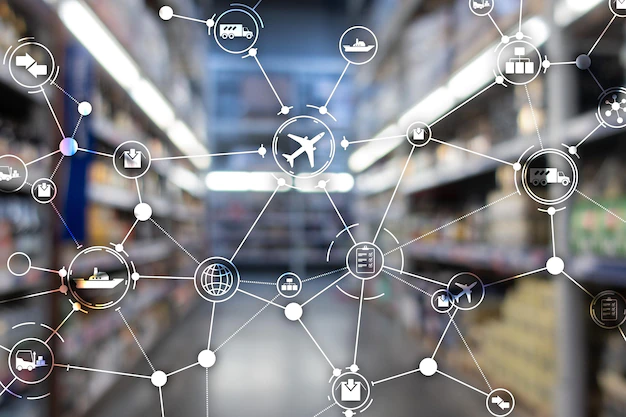
In the interconnected world of international commerce, the seamless flow of goods across borders has become a cornerstone of modern supply chains. Behind this intricate dance of products moving from factories to consumers lies the crucial role of global logistics. As companies strive to expand their reach and optimize operations, understanding the influence of worldwide logistics on modern supply chains is essential. For more information about Scan Global Logistics, a leader in the field, keep reading.
Efficiency In Motion
Transportation through air, ocean, and rail has become the basis of strategically planning, implementing and managing the movement and storage of goods across the globe. It involves a complex interplay of transportation, distribution, warehousing, inventory management, and information technology. By effectively coordinating these components, businesses can ensure that products move efficiently from point of origin to destination, regardless of geographical barriers.
Connecting Continents: The Supply Chain Backbone

Supply chains today span continents with consumers spread across different regions. Global logistics acts as the connective tissue that binds these dispersed elements into a cohesive and functioning whole. It helps the movement of goods, ensuring they reach the right place at the right time.
Navigating Complex Regulations
Operating across borders introduces a web of regulatory challenges – from customs procedures and import/export regulations to compliance with international standards. Global logistics professionals are adept at navigating these intricacies.
Strategic Advantage Through Timely Deliveries
In the competitive landscape of today’s business world, timely deliveries are a strategic advantage. Efficient global logistics reduce lead times, enabling companies to respond swiftly to changing market demands and trends.
Partnering With Scan Global Logistics For Seamless Solutions
At Scan Global Logistics, we recognize the pivotal role of global logistics in shaping modern supply chains. Our commitment to excellence is reflected in our array of professional airfreight services designed to meet your diverse needs. Whether you require expedited shipments through onboard courier services, seek sustainability through Sea-Air solutions, or demand flexibility with air charters, we have tailored solutions to elevate your logistics game.
With a track record of reliability and a global network of partners, we are here to make your cross-border operations efficient, secure, and successful. So, experience the power of seamless global logistics with Scan Global Logistics by your side.
The Logistic Trends In 2023 That Change the Business Scenario
The global logistics industry is evolving fast, which is why the stakeholders are inclined to embrace new technology, work processes, or mechanisms to sync with the growing requirements. This section discusses some of the new strategic approaches and technologies that shape the modern logistics industry.
1. Supply Chain Agility
Businesses are rolling fast with the increasing demand and persistent technological change. They are trying to make the supply chain competitive. The management bodies are shifting fast towards supply chain agility to manage their day-to-day work.
These self-managed services offer hands-on control to the business and shun the dependency on other service providers to complete their tasks. With the help of agile technology, self-management, and integrated solutions are used. With the help of it, the internal process can be managed better.
2. Global Labor Shortages
Different surveys and statistical results say that there will be a shortage of skilled laborers in the future. To combat this shortcoming, the logistic providers will be compelled to shift towards automation.
The movement has already started in Europe, where various companies are experimenting with different permutations and combinations so that it helps the business to grow and prosper. The companies are venturing towards driverless trucks.
In the midst of labor shortages, logistics companies are looking toward automated solutions to ensure workforce efficiency.
3. Warehouse Simulations
With the help of simulation that uses the digital twin technology, business organizations are raising their competitiveness. The technology comprises using virtual replicas of the objects or processes with an aim to reproduce real-world activities.
In logistics, the virtual representation process allows you to simulate warehouse layouts with the assistance of three-dimensional representation. There, you can easily visualize the prospective operations in logistics. Simulation helps pinpoint the inefficiencies and at the same time, helps in decision making.
4. Robotics
It is one of the most important developments that the logistics industry is focussing on during this year. The task involves the use of software robots that would interact with programs automatically. The process can automate repetitive tasks like moving folders, creating dictionaries, copying and pasting data, connecting to web applications, and other functions that bank on redundancy.
With robotic technology’s help, purchase orders based on automated criteria are executed. It ensures better management and safety of the goods.
5. Consumer Real-Time Data And Visualization
Amazon, the biggest e-commerce brand, influenced shopping behavior and brought a paradigm shift in business. Their fast delivery time and the delivery location become important elements in this development. Therefore, to deliver real-time status updates, one must take the help of ERP and other platforms.
It ensures continuous tracking of products and monitoring of order shipments. In return, the customers remain well informed on the whereabouts of the delivery (we mean location status).
6.Cloud Computing
Cloud computing is one such technology that has created wonders in different sectors like healthcare. Now it’s the turn of the logistics and supply secretary.
The stakeholders will use the software as a service, which will be another core logistic trend in 2023 and beyond. Plus, it saves you money on the infrastructure and, at the same time, the cost of maintenance. Integration of the cloud technology is said to make the service highly flexible.
7.Use Of Drones
It is perhaps among the most fascinating trends that’s going to hit the logistics sector. Different multinational tech organizations like Google have been working continuously on developing drone prototypes.
If successfully managed, the integration can easily lower the cost. Alongside some other benefits like low cost, faster shipments can be managed easily.
Conclusion
The logistics trends are indeed positive as it is running at a fast pace with the needs of the time. This is all about the use of technology that shapes modern business organizations. The logistics businesses’ embracing technology like SaaS, Cloud computing, robotics, and such hi-tech elements will shape the modern supply chain.
Read Also:




























